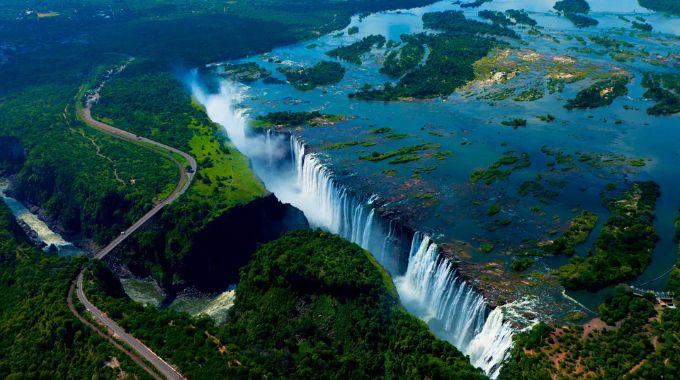Located on the border between Zambia and Zimbabwe, Victoria Falls stands as one of the world’s most extraordinary natural wonders.
Often described as “The Smoke that Thunders,” this breathtaking waterfall captivates travelers with its immense power, stunning landscapes, and rich cultural history.
In this travel guide, we will explore everything you need to know about Victoria Falls, from its fascinating background and top attractions to the best times to visit and practical travel tips.
In this article, you’ll find detailed information on:
- The history and geographical significance of Victoria Falls.
- Must-see attractions and thrilling activities.
- Seasonal travel tips and the best times to visit.
- How to get there, accommodation options, and dining recommendations.
- Frequently asked questions to ensure a smooth and safe journey.
Background & History of Victoria Falls
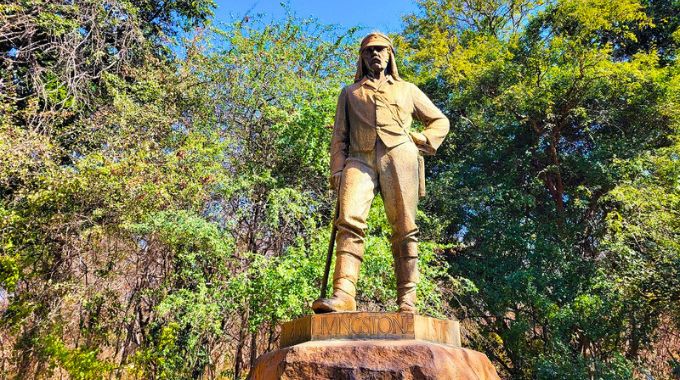

Victoria Falls is not only a spectacle of natural beauty but also a site steeped in history and cultural significance.
The falls were named in 1855 by the Scottish explorer David Livingstone, in honor of Queen Victoria.
The local indigenous communities, however, have long revered this mighty cascade and refer to it as “Mosi-oa-Tunya,” which translates to “The Smoke that Thunders”, a fitting description given the enormous volumes of water that plunge over the edge.
Geographical and Geological Significance
The falls are formed by the Zambezi River as it cascades over a basalt plateau, creating a curtain of water that stretches approximately 1.7 kilometers (1 mile) wide.
During the rainy season, the sheer volume of water produces a mist that can be seen from miles away, enveloping the surrounding rainforest in a perpetual haze.
Geologists believe that the formation of Victoria Falls began around 100,000 years ago, and today the continuous erosion of the basalt cliffs contributes to an ever-changing landscape that fascinates scientists and visitors alike.
Cultural Impact
For local communities, Victoria Falls is much more than a natural landmark, it is a sacred site intertwined with folklore, rituals and traditions.
The indigenous Tonga people, among others, hold ceremonies and share legends that have been passed down through generations.
Their stories add a mystical element to the falls, enhancing its allure as a destination where nature and culture seamlessly converge.
High-quality images and immersive video tours have allowed global audiences to witness the raw beauty and majesty of Victoria Falls, contributing to its status as a top tourist destination in Southern Africa.
Today, the falls are a UNESCO World Heritage Site, recognized not only for their ecological importance but also for their cultural and historical legacy.
Top Attractions and Activities
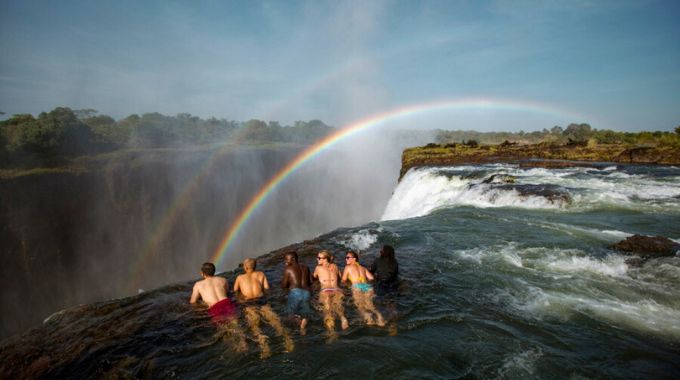

Victoria Falls offers a diverse range of activities and attractions that cater to every type of traveler.
Whether you’re in search of adventure, relaxation, or cultural immersion, you will find plenty to do in and around this natural wonder.
The Falls and Natural Beauty
Awe-Inspiring Views
The primary attraction is, of course, the falls themselves.
Standing at the edge of the precipice, visitors are treated to a mesmerizing panorama of cascading water, misty rainbows, and lush vegetation.
There are several viewing points along the Zimbabwean side, each offering a unique perspective. Some of the best spots include the Main Falls, the Knife-Edge Bridge, and the Devil’s Cataract viewpoint.
Photography and Observation
Photography enthusiasts will relish the opportunity to capture the interplay of light and water.
Early mornings and late afternoons are ideal for capturing vibrant rainbows that frequently appear in the mist.
Guided tours often include stops at hidden viewpoints, allowing you to appreciate the falls from intimate angles away from the crowds.
Adventure Activities
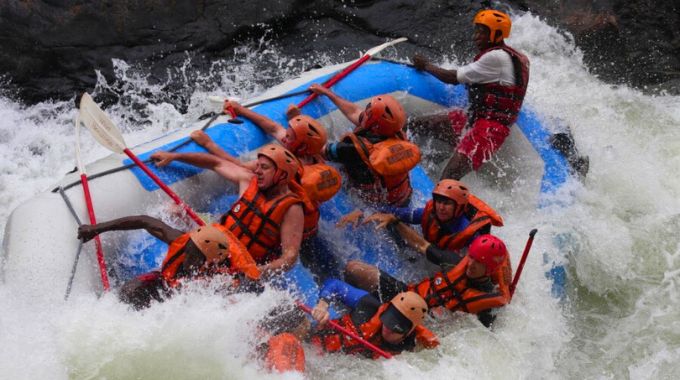

For thrill-seekers, Victoria Falls is a veritable playground of adventure sports that blend adrenaline with the awe-inspiring backdrop of nature’s raw power.
White-Water Rafting
Experience the rush of navigating turbulent rapids on the Zambezi River.
White-water rafting here is considered one of the best in the world, with options for both beginners and seasoned rafters. Expert guides ensure that every adventure is safe yet exhilarating.
Bungee Jumping and Bridge Swinging
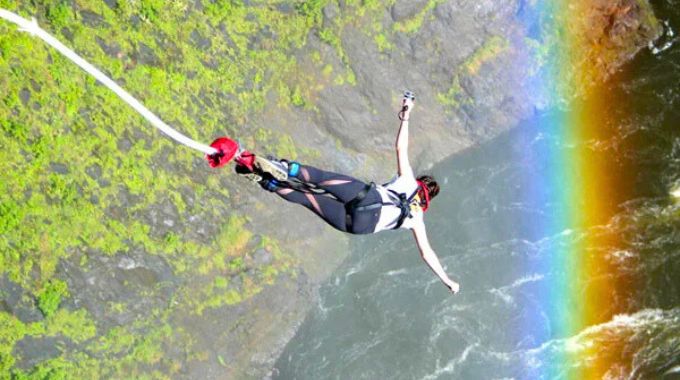

For those who crave extreme thrills, bungee jumping off the Victoria Falls Bridge is an unforgettable experience.
With the roaring falls in the background, the leap of faith provides an unparalleled adrenaline rush.
Bridge swinging, a variation of bungee jumping, offers a unique twist by allowing adventurers to swing back and forth over the gorge.
Helicopter and Microlight Flights
A bird’s-eye view of Victoria Falls is simply breathtaking. Helicopter tours and microlight flights provide a unique vantage point, allowing you to see the vast expanse of the falls and the surrounding wilderness.
These aerial tours are a favorite for travelers who want to combine photography with adventure.
Wildlife and Safaris
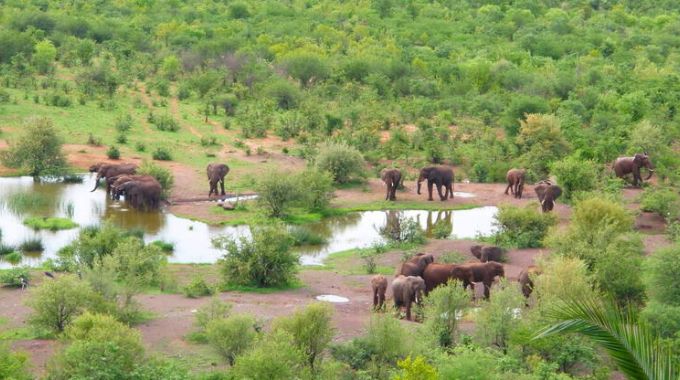

Victoria Falls is surrounded by an abundance of wildlife, making it an excellent destination for safari enthusiasts.
Zambezi National Park
Located on the banks of the Zambezi River, this park offers excellent opportunities for game drives.
You can expect to see elephants, buffalo, and a variety of antelope species in their natural habitat.
The park’s proximity to the falls adds an extra layer of intrigue to your wildlife experience.
Chobe National Park and Beyond
While technically in Botswana, many tours include day trips to nearby reserves like Chobe National Park, renowned for its large herds of elephants and diverse birdlife.
Guided safari tours offer the chance to observe Africa’s majestic creatures up close, with expert commentary enhancing your understanding of the ecosystem.
Best Time to Visit Victoria Falls
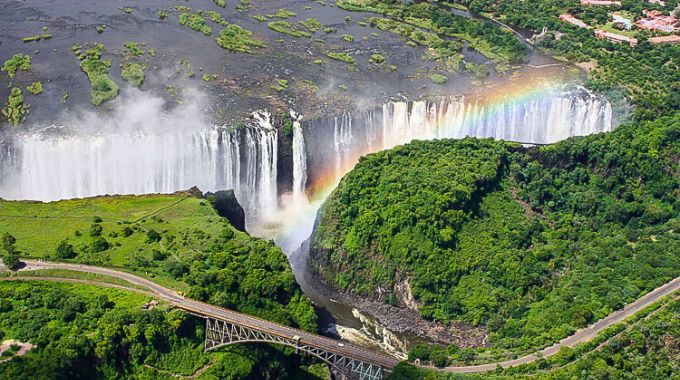

Understanding the seasonal variations is key to maximizing your Victoria Falls experience.
Weather and Seasonal Considerations
Victoria Falls experiences two primary climatic seasons, wet and dry, with transitional shoulder periods that offer a blend of conditions.
Understanding these seasonal patterns can help you plan your visit to best suit your interests, whether you’re seeking the raw power of the falls or clearer, more stable weather for sightseeing.
Wet Season (Typically November to April)
During the wet season, the region is graced with tropical rains that dramatically swell the Zambezi River.
The falls reach their most spectacular display between February and April, when the cascading water produces a thunderous roar and an impressive plume of mist—aptly earning the local name, “Mosi-oa-Tunya” (The Smoke that Thunders).
This season offers a breathtaking natural spectacle, but the heavy spray and occasional overcast conditions can sometimes obscure certain viewpoints.
The weather is generally warm and humid, with daytime temperatures averaging around 28°C (82°F) and cooler, more comfortable evenings.
This period is ideal if you want to witness the sheer volume and power of the falls at their peak.
Dry Season (Typically May to October)
In contrast, the dry season is characterized by minimal rainfall, lower humidity, and more stable weather conditions.
With the water volume reduced, the structure of the falls and the underlying rock formations become much more visible, providing photographers and sightseers with clearer, unobstructed views.
Although the dramatic water flow diminishes, the conditions remain exciting for adventure activities such as white-water rafting, where the rapids, while slightly less intense, still offer plenty of thrills.
During the dry months, daytime temperatures generally range between 25°C and 30°C (77°F to 86°F), while nights, especially in the cooler months of June and July, can see a noticeable drop in temperature.
Shoulder Season (Early May and November)
The transitional months at the beginning and end of the wet season offer a pleasant mix of both climatic conditions.
In early May, rainfall begins to taper off or ramp up gradually, resulting in moderate water levels that allow for both impressive displays at the falls and more comfortable conditions for sightseeing.
These months are ideal for visitors who wish to experience a balance between the lush, dramatic scenery of the wet season and the clearer, drier conditions of the dry season.
By aligning your travel plans with these seasonal variations, you can tailor your Victoria Falls experience to match your interests.
No matter when you visit, be prepared for a mix of weather conditions:
- Lightweight Clothing: For warm days and humid conditions.
- Rain Gear: Especially during the rainy season, to protect against the mist.
- Comfortable Footwear: Essential for exploring rocky trails and engaging in adventure sports.
- Sun Protection: Hats, sunglasses, and high-SPF sunscreen are a must, given the intense African sun.
How to Get There and Travel Tips
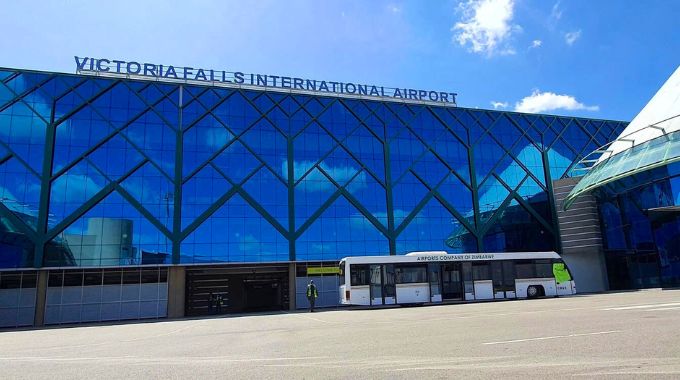

Reaching Victoria Falls is an adventure in itself, with several options tailored to different travel styles and budgets.
Travel Options
By Air
Victoria Falls International Airport, located on the Zimbabwean side, serves both domestic and international flights.
Many airlines offer seasonal direct flights from major cities in Africa, as well as chartered services from Europe and Asia.
Flying is the quickest way to get to the falls, with frequent connections from Harare and Johannesburg.
By Road
For those who prefer a more scenic route, traveling by road is a popular option.
Many tour operators offer guided road trips that not only take you to Victoria Falls but also allow you to explore other attractions along the way.
Buses and private transfers are available, though the journey can be long and winding.
Combined Tours
Several travel agencies offer package deals that include flights, accommodation, and guided tours of the falls and nearby attractions.
These packages are particularly popular with international travelers who seek a hassle-free experience.
Local Transport & Accessibility
Once you arrive, local transportation options such as taxis, shuttles, and rental cars are readily available.
For a more immersive experience, consider hiring a local guide who can provide insider tips on hidden gems and less crowded viewpoints.
Safety Tips
Victoria Falls is generally safe for tourists, but it is important to exercise common travel precautions:
- Stay Informed: Check local travel advisories and weather forecasts before your trip.
- Secure Valuables: Keep your important documents, money, and electronics in a safe place.
- Travel in Groups: Especially when engaging in adventure sports or venturing off the beaten track.
- Health Precautions: Ensure you have any necessary vaccinations and carry a basic first-aid kit.
Accommodation and Dining
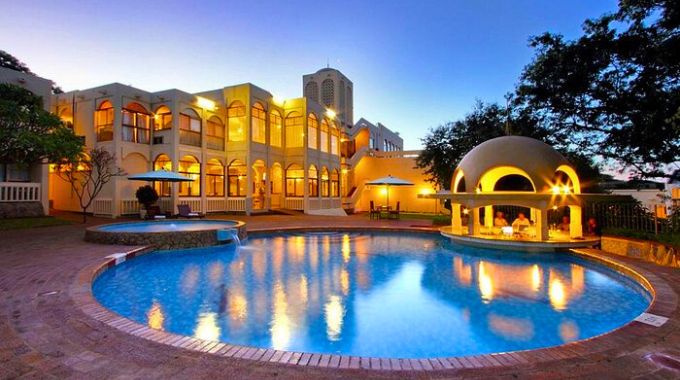

Victoria Falls offers a wide range of accommodation options to suit every budget, along with diverse dining experiences that highlight local and international flavors.
Where to Stay
Luxury Lodges and Hotels
For those seeking indulgence, luxury lodges and hotels provide world-class amenities with stunning views of the falls.
Properties such as Victoria Falls Hotel and The Victoria Falls Rainbow Hotel offer elegant rooms, fine dining, and spa services, all designed to enhance your experience of this natural wonder.
Mid-Range Options
A variety of mid-range accommodations provide comfort and convenience without breaking the bank.
These establishments often include modern amenities such as Wi-Fi, swimming pools, and on-site restaurants, making them perfect for families and couples.
Budget-Friendly Hostels and Guesthouses
Travelers on a tight budget will appreciate the many hostels and guesthouses available near the falls.
These options offer basic yet comfortable lodging, a friendly atmosphere, and opportunities to meet fellow travelers from around the world.
Where to Eat
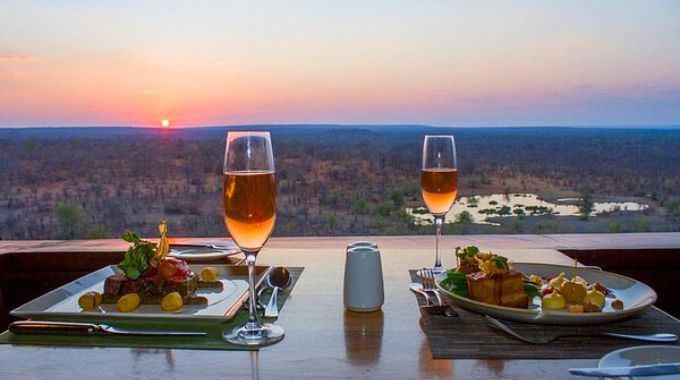

Local Cuisine
Exploring the local culinary scene is a highlight of any visit to Victoria Falls.
Enjoy traditional Zimbabwean dishes such as sadza (a staple maize porridge), nyama (meat stews), and locally sourced vegetables.
Many restaurants feature live music and cultural performances that offer a taste of local heritage.
International Flavors
In addition to local fare, numerous eateries offer international cuisine, ranging from Italian and Indian to contemporary fusion dishes.
Whether you prefer a casual meal or a fine dining experience, the diverse food scene ensures that every palate is catered to.
Dining with a View
Some restaurants and bars boast spectacular views of the falls or the surrounding bushveld.
Dining alfresco with the roar of the cascading water as your backdrop can be an unforgettable experience that marries nature with gourmet delights.
Practical Tips & FAQs
Practical Travel Hacks
- Book in Advance: During peak seasons, accommodations and tour packages can fill up quickly. Booking well in advance can save you both money and hassle.
- Pack Smart: Given the mix of weather conditions, pack layers and versatile clothing. A good pair of binoculars can enhance your wildlife spotting experience.
- Local Currency: The local currency is the Zimbabwe Gold (ZiG), though US Dollars are widely accepted. Familiarize yourself with the exchange rate and keep small denominations handy.
- Connectivity: While many hotels and lodges offer Wi-Fi, consider purchasing a local SIM card for better connectivity during your explorations.
Frequently Asked Questions
Q: Is Victoria Falls safe for solo travelers?
A: Yes, Victoria Falls is generally safe for solo travelers. However, it is always wise to stay vigilant, avoid isolated areas at night, and follow local advice regarding safety.
Q: What is the best time of day to view the falls?
A: Early mornings and late afternoons are ideal for viewing and photographing the falls. The soft light at these times enhances the natural beauty and often produces stunning rainbows in the mist.
Q: Are guided tours necessary?
A: While self-guided tours are possible, guided tours offer valuable insights into the history, geology, and cultural significance of Victoria Falls. Experienced guides can also safely manage adventure activities and navigate less-known viewing points.
Q: What should I pack for a trip to Victoria Falls?
A: Essential items include lightweight clothing, rain gear, comfortable walking shoes, sun protection (hat, sunglasses, sunscreen), a reusable water bottle, and any necessary travel documents. If you plan to participate in adventure sports, check with your tour operator for any specialized equipment requirements.
Q: Can I visit both the Zimbabwean and Zambian sides of the falls?
A: Yes, many travelers choose to experience both sides of Victoria Falls, as each offers unique perspectives and activities. Be sure to check visa requirements and border crossing regulations beforehand.
Victoria Falls is much more than a destination. It is an immersive experience that touches every sense and leaves an indelible mark on your memory.
From its dramatic history and cultural heritage to the adrenaline-pumping adventures and serene natural beauty, this natural wonder offers something for every traveler.

